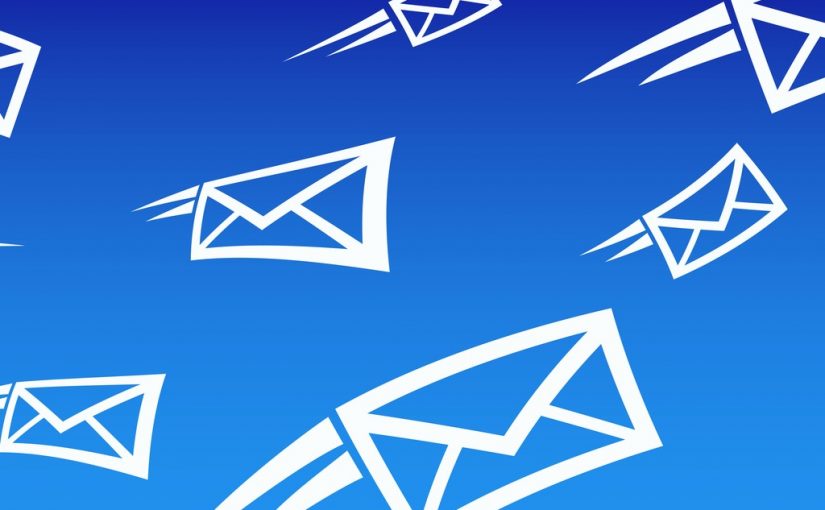You’ve come up with a brilliant idea for your next marketing campaign. You know exactly how you want to sell your product: the features you want to highlight, the unique selling proposition you’re going to emphasize, and the marketing copy you’re going to use.
But there’s just one problem: you don’t have time to develop the campaign for multiple platforms. Your to-do list is a mile long, and adding more marketing tasks to it is going to over complicate your life. You can’t delegate the task to anyone else: it’s all up to you. Where should you focus your marketing efforts?
Should you write the campaign for Instagram? Facebook? Twitter? TikTok? Or email?
Taking a look at the statistics can help you to find out exactly why you should prioritize using email for your marketing campaigns.
Do Customers Open Their Emails?
We know that email has been around for years. But is it the most effective way to reach customers?
What’s the first thing you do when you log on to your computer? For many people, the answer is that they immediately check their email. In fact, 99% of email users check their inbox every single day.
Statistics show us that not only do 99% of consumers check their email every day, but workers spend, on average, 28% of their workweek reading or responding to emails. That’s a lot of time spent looking at their inbox.
However, sometimes marketing emails are prevented from reaching consumer inboxes. Why? The spam filter sends them straight to no-man’s land.
Don’t give up on email yet, though: there’s good news. Email clients have become more effective at separating spam messages from genuine marketing communications. Therefore, nowadays it’s more likely that your outreach emails will land where they’re supposed to be: in your customer’s inbox, ready to capture their attention.
Email vs. Social Media
Some people might be tempted to think that, even though emails are landing in customers’ inboxes, there’s still no comparison between the power of email marketing and the power of social media. To find out for sure, let’s take a look at the statistics.
According to Hootsuite, 45% of the global population is active on social media. That’s a good chunk, but it doesn’t quite compare to email users.
What’s even more interesting is that on Facebook, Instagram, and Twitter, companies are seeing an engagement rate of less than .6%. People will see an ad, or the word “Sponsored,” and just scroll past the post. Even if they’re following your business account, they might not read your posts.
On average, customers open their emails at a rate of 22.86% and click-through at a rate of 3.71%. That’s much better than the social media engagement rate of less than .6%!
Social media might be flashy and fun, but it’s not as reliable as email. Algorithms might work in your favor; or, they might bury your carefully-crafted messaging so that it never reaches your potential customers’ eyes.
You’ve spent precious time and energy working your marketing campaigns. Don’t waste your effort by relying on social media algorithms to convey your message to the right customers.
It’s also important to realize that a social media platform can delete your account at any time (remember those pesky Terms and Conditions you agreed to?). That means that you might lose all your followers, and all those potential leads could disappear.
When you build your email list, you own it. Customers can unsubscribe (and they do), but ultimately, you are still in control.
How To Leverage Email To Your Advantage
We know that consumers consistently check their emails and that you have more control over email than you do over social media.
So, how do you take the power of email and put it to good use?
The first step you should take is to analyze your email list and create a segmented version. Segment your potential leads into groups based on the factors that make the most sense for your business. Consider their purchase history, geographic location, demographics, industry, occupation, position or seniority level, past engagement activity, location in the sales funnel, and the amount of time since the last brand interaction.
Once you have your segmented email list, you can change your messaging. Don’t use a general, vague sales message. Craft your marketing email so that it specifically appeals more to each segment.
Then, after you have your email crafted just for each segmented list, you should further personalize them as much as you can. Fortunately, there’s software available that can help you easily personalize the subject line, preview text, email body, call-to-action, and sign-off.
Keep in mind that recipients are 26% more likely to open emails that have subject lines tailored specifically to them.
Remember, above all else your emails should be valuable to your customers. Don’t give them a reason to unsubscribe by sending too many emails or emails that are worthless!
Conclusion
Ultimately, email is an extremely powerful tool because people check their inboxes daily, because social media is unpredictable, and because emails can be usefully tailored to segments of your customer list.
Don’t believe the pessimistic and incorrect idea that because email isn’t trendy, it’s not worth your time. Email is a fantastic way for companies to communicate with their customers and to prove how their products can meet their customer’s needs.

